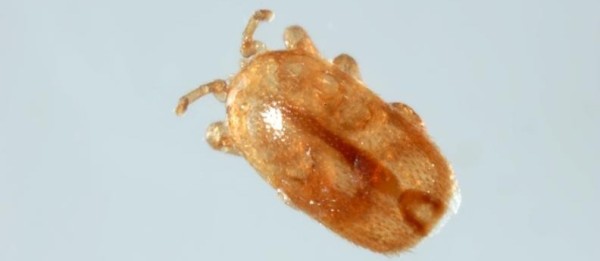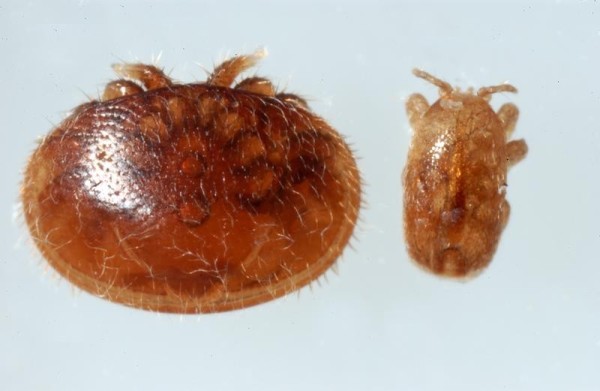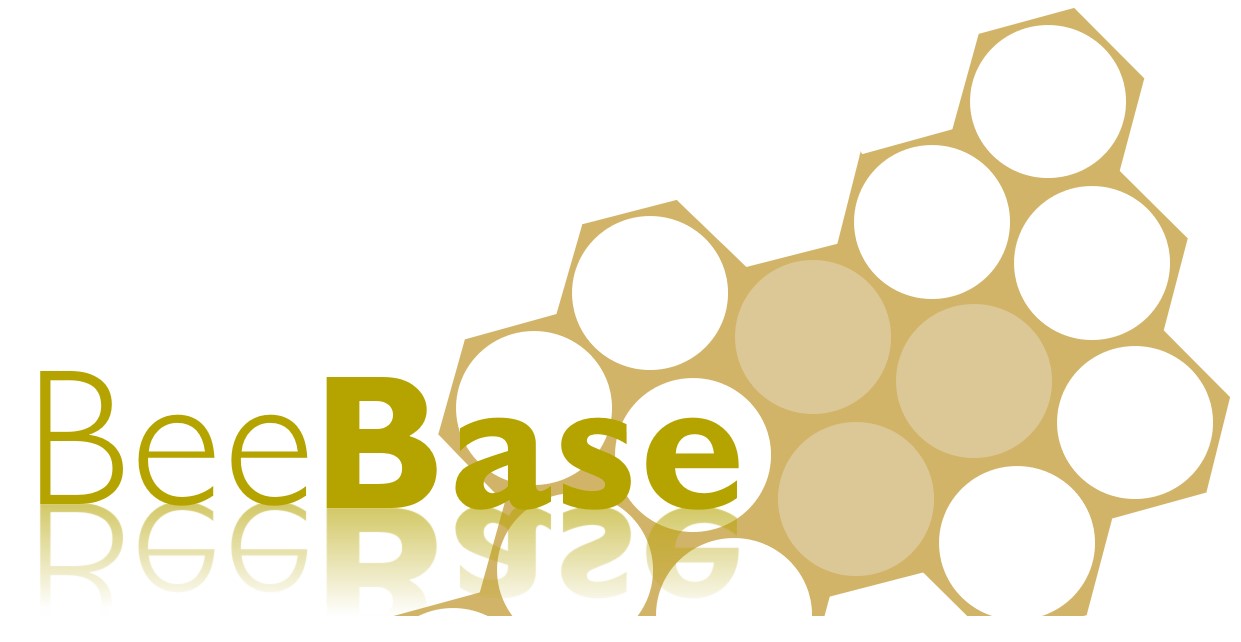There are currently four species of Tropilaelaps mites. Of these only two (Tropilaelaps clareae and Tropilaelaps mercedesaeI) are considered serious mite threats to the Western honey bee Apis mellifera (Anderson and Morgan, 2007). Both are economically damaging pests throughout Asia. T. mercedesae is widely spread throughout Asian while T. Clareae is restricted to the Philippines. In coming years both could spread into temperate regions. Both are considered emerging threats to world apiculture. The potential effects of climate change and the risks this represents for establishment of these pests in the UK are being studied at the National Bee Unit. Please see the Research project pages for further details, and more information is available in the advisory leaflet Tropilaelaps: parasitic mites of honeybees.
 A Tropilaelaps mite
A Tropilaelaps mite
Geographical Range
The known geographic range of Tropilaelaps has spread significantly over the last 40 years. The main factor currently limiting survival and spread of exotic mites in the UK is their dependency on a continuous, year-round food supply of immature bees within parasitised colonies. Under existing climatic conditions, cold winters prevent A. mellifera from producing brood, so any introduced Tropilaelaps would starve. However, even slightly milder UK winters, as anticipated with global warming will support uninterrupted brood production. It is already known that in many parts of the UK there is brood present all year round, including in more northern areas of the country. This direct relationship between climate/host/parasite makes the Tropilaelaps/honey bee model particularly relevant to climate change scenarios.
Life cycle
Female T. clareae are light-reddish brown and about 1.0 mm long x 0.6 mm wide, while males are almost as large as the females (about one-third the size of a Varroa mite). The life cycle and parasitism of A. mellifera is similar to that of Varroa destructor. T. clareae readily infests colonies of A. mellifera in Asia, particularly where colonies continually produce brood. Adult female mites enter cells containing larvae where reproduction takes place within sealed brood cells. The mother mite lays three to four eggs on mature bee larvae 48 hours after cell capping. Development requires approximately 6 days, and the adults (including the mother mite) emerge with the hatching adult bee then search for new hosts. Mites move rapidly across the brood combs and are therefore easier to spot than Varroa, although they are much smaller. T. clareae has a shorter reproductive cycle than V. destructor, so when both mites are present in the same colony, T. clareae populations build up more rapidly.
Current Status
Currently, Tropilaelaps spp. is not present in the UK, but if introduced, could potentially cause major damage if they became established. The mite is statutorily notifiable in England and Wales by the Bee Diseases and Pests Control Order 2006 and the Bee Diseases and Pests Control (Wales) Order 2006 meaning that if a beekeeper suspects they have an infestation of Tropilaelaps mites, they must report it to the NBU.
To help with surveillance efforts, the National Bee Unit Inspectorate carries out surveillance for Exotic pests each year in at risk apiaries, for example, those apiaries around ports or freight depots. Additionally, beekeepers are strongly encouraged to regularly monitor their hives for their presence. Any suspect mites should be sent immediately to the Laboratory for investigation.
 Tropilaelaps (right) and Varroa (left)
Tropilaelaps (right) and Varroa (left)
Contingency Plans
Please follow the links below to download our Contingency Plans which outline proposed action in the event of an introduction of Tropilaelaps into England or Wales:
- Pest Specific Contingency Plan Small Hive Beetle and Tropilaelaps mite;
- Cynllun Wrth Gefn ar gyfer Pla Penodol Chwilen Fach y Cwch Gwenyn a gwiddonyn Tropilaelaps.
Further information is available on our Contingency Planning BeeBase page.
Further reading
For more information on this pest please see the OIE Chapter on Tropilaelaps mites;
